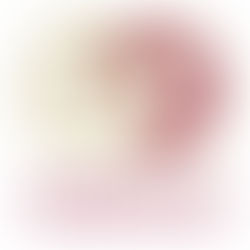Developing Honey-like glazes at stoneware temperatures
I am looking at developing glazed surfaces that look a bit like traditional English lead ware but fired to higher stoneware temperatures. The plan is that this will be another nod to old pottery traditions but as an up-to-date adjustment for glazing my large figures.
Developing LG glaze:
My initial inspiration comes from a firing 'mistake' made by MA student Pam Hunter in the year above me. She accidentally fired her lead glaze piece to 1260°c. The expectation was that due to the unusually high firing temperature the glaze would have run off. But it didn't but had a lovely feel to it.

This is what the test cones looked like after bisque firing. They all were decorated loosely with white and black slips and had lines scratched through the slips:


So, the first step was use out some of her mixed lead glaze and try it out on some of my red clay cones, which have also been bisque fired to 1260°c in oxidation with a black and white slip (50% ball clay + 50% china clay) decoration. I tested two different sort of Valentine Clay's red clays: E/S75 and PF690.

Result:
I liked the colour but the glaze needed to be applied thicker to get the nice toffee-like shininess.
However, it was a good sign that the glaze didn't melt.
The black slip seemed to fuse with the glaze and remained matt.

Next:
I mixed my own glaze based on Pam's recipe but varied the amount of oxides added. I tried these out on PF690 red clay with white slip decoration fired to 1260°c in oxidation.





Result:
Copper oxide glazes had not enough oxides added at 2% and 3% - I need to increase it to 4% or 5%.
The 6% red iron oxide glaze was the most successful but I need to make sure that it gets glazed thickly for it to be shiny and glossy.
Developing AH glaze:

Next another student in year above, Adele Davison, claimed that she had a stoneware honey glaze and she let me try out her glaze. I repeated the test that I did with Pam's glaze with same cones.

Result:
Glaze didn't run - good.
It had a nice shininess but had more Tenmoku kind of qualities and was too dark.
Next:
As with the LG glaze I now mixed my own glaze and varied the oxide contents, applied them to red PF690 test tiles with white slip and fired them to 1260°c in oxidation.

Result:

The red iron oxide test did not result a rich honey colour but an unpleasant dirty olive green. Also, the higher to level of oxide, the matter the finish.
However, with both the copper oxide and cobalt oxide test I had really good result with strong colours and high gloss.
Next:
I increased the iron oxide content in two more test batches to 10% and 12%.

Result:
It did not give me the toffee like honey glaze I'm after. It is much more like a Tenmoku glaze.
Another test:
I also tested these on a different clay body, on Valentine's PF700G a mix of white stoneware, porcelain and grog. My approach is a bit shaky here as I only tested the 2%, 4%, 10% and 12% and not 6% or 8% because I was out of glaze.

Result:
Actually the 2% iron oxide looks a lot more like a traditional celadon glaze after reduction firing. None of these are what I'm looking for. I don't think testing 6% or 8% will give me what I want either.
Combining LG glaze with AH glaze
So, what happens if I combine the two glazes together. AH, which has no lead in it, should help stabilise LG at higher temperatures as LG has 70% in it. LG should add the honey glaze qualities that a lead based glaze has to the AH glaze. It is definitely worth a try.
Test:
Combine 50% AH with 50% LG - one batch with 6% red iron oxide - other batch with 8% red iron oxide. My test cones are made from PF690 clay with white and back slips.

Result:
The surface finish is too dry and matt. The black slip fuses with the glaze. The white slip nearly disappears. The samples are too dark. Not what I want.
Here are all cone test photographed together for comparison:

None of these will do me on red clay.
Next Test:
Next I try these glazes on the lighter PF700G clay. I figure that instead of painting white slip onto red clay - as done in the olden times when red clay was so much more readily available and affordable to produce the typical English honey lead ware - why not paint a dark colour/slip onto white clay? I am not trying the replicate historic glazes but do my own take on them.

Result:
Well, I am very pleased with the outcome. This is really quite close to what I want to achieve. Definitely worth pursuing further. Note to self: try this out with a slip underneath.
Test:
Applying these two same glazes to a horizontal surface. This little test pot is made from PF700G clay with water etched relief and black design liner decoration. 1/2 is dipped into glaze with 6% iron oxide and the other with 8% and then fired to 1260°c in oxidation.

Result:
The glaze didn't run too much. The textured pattern shows up nicely. I may have to have another try with the 8% iron oxide glaze as it doesn't seem as glossy as the 6% one. However, I don't like the design liner details. They seem alien to this sort of pot and doesn't harmonise.

















